Posts published in 2018
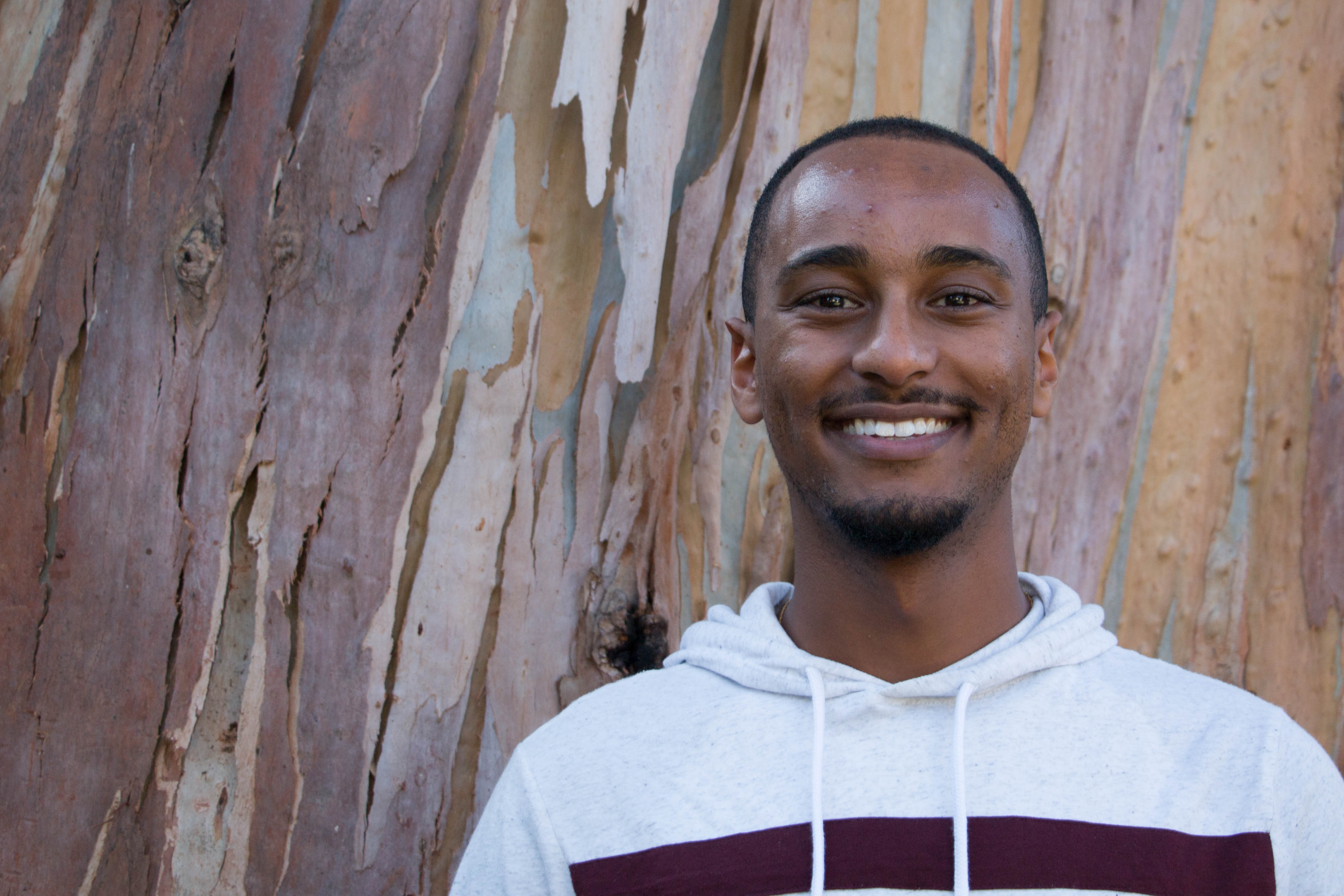
Corresponding with Criminal Justice: Letters that Brought Me Hope
By Samuel Feineh, ’19
It wasn’t until the summer after my sophomore year, through my second Cardinal Quarter opportunity, that I became more confident in who I am and what I stand for.
During summer 2017, I interned at the American Civil Liberties Union’s National Prison Project, which is dedicated to reforming prison conditions nationwide. In 2014, the ACLU filed a 34,000-person class action lawsuit against the Arizona Department of Corrections (ADC) for violating a number of inmates’ constitutional rights. After a long legal battle, the ADC agreed to reform its health care system, limit the use of solitary confinement, and provide greater access to mental health resources. When I arrived, the ACLU was monitoring the department’s compliance.
As part of the class action lawsuit, inmates could send letters to the ACLU. I spent most of my time responding to each inmate who wrote to us to supply them with resources to help them file their own lawsuits, seek medical help, or file a grievance in prison.
Hundreds of inmates wrote. Some had simple requests, and others revealed the horrid prison conditions they faced.
Reading these letters was at times straightforward, and at other times, heartbreaking. There were countless stories about inmates being denied medical coverage by private contractors, and as a result, facing life-or-death situations. In one letter, a prisoner wrote that a prison guard raped a severely mentally ill inmate, yet no investigation was undertaken.
While there was much to be frustrated about, I learned something so important from my colleagues at the ACLU: when you want to change a corrupt system, you have to start somewhere. And after you start, you keep fighting.
I spent hours on each letter, combing through the inmates’ files to send as many resources as possible. I also scrutinized thousands of documents—including medical reports and use-of-force logs—that the ADC sent us to ensure that they complied with various class action stipulations.
As part of this review process, I analyzed prison temperature logs. Each of the 15 ADC state prisons had to record the temperature at set times every day, compile the data, then send it to the ACLU each month. These records helped the ACLU ensure humane conditions in the facilities, especially in the summer months when temperatures sometimes exceeded 100 degrees Fahrenheit. The logs were routine and usually unsurprising, though we wondered if the prisons were falsifying the data because most of the temperatures ranged between 80 and 90 degrees. We had no way of proving deceit, until I found the proof.
One day, while reviewing the last few pages of one state prison’s report to the ACLU, I noticed that the facility had filled in temperature data for six dates that came after the date they had sent us the logs. The ACLU team provided the information to the judge, and swift action was taken to punish the ADC.
Witnessing how evidence is leveraged to administer justice further revitalized my hope in prison reform: through rigorous analysis, I played my part as a watchdog and made a difference.
When I came home each night to the Stanford in Washington house and told my new friends about my work, I felt my newfound sense of purpose seep into the conversation. This experience left me believing I am a change agent, and I’m excited to continue nurturing my passion. I am emboldened to keep fighting.
Samuel “Sam” Feineh is a 2018-19 Cardinal Service Peer Advisor. During the summer of his freshman year, Sam received a Cardinal Quarter to intern for his Congressman on Capitol Hill. This year, he also serves as the vice chair of programming for Stanford in Government and co-president of the Stanford Black Pre-Law Society. He is originally from Sacramento, CA.
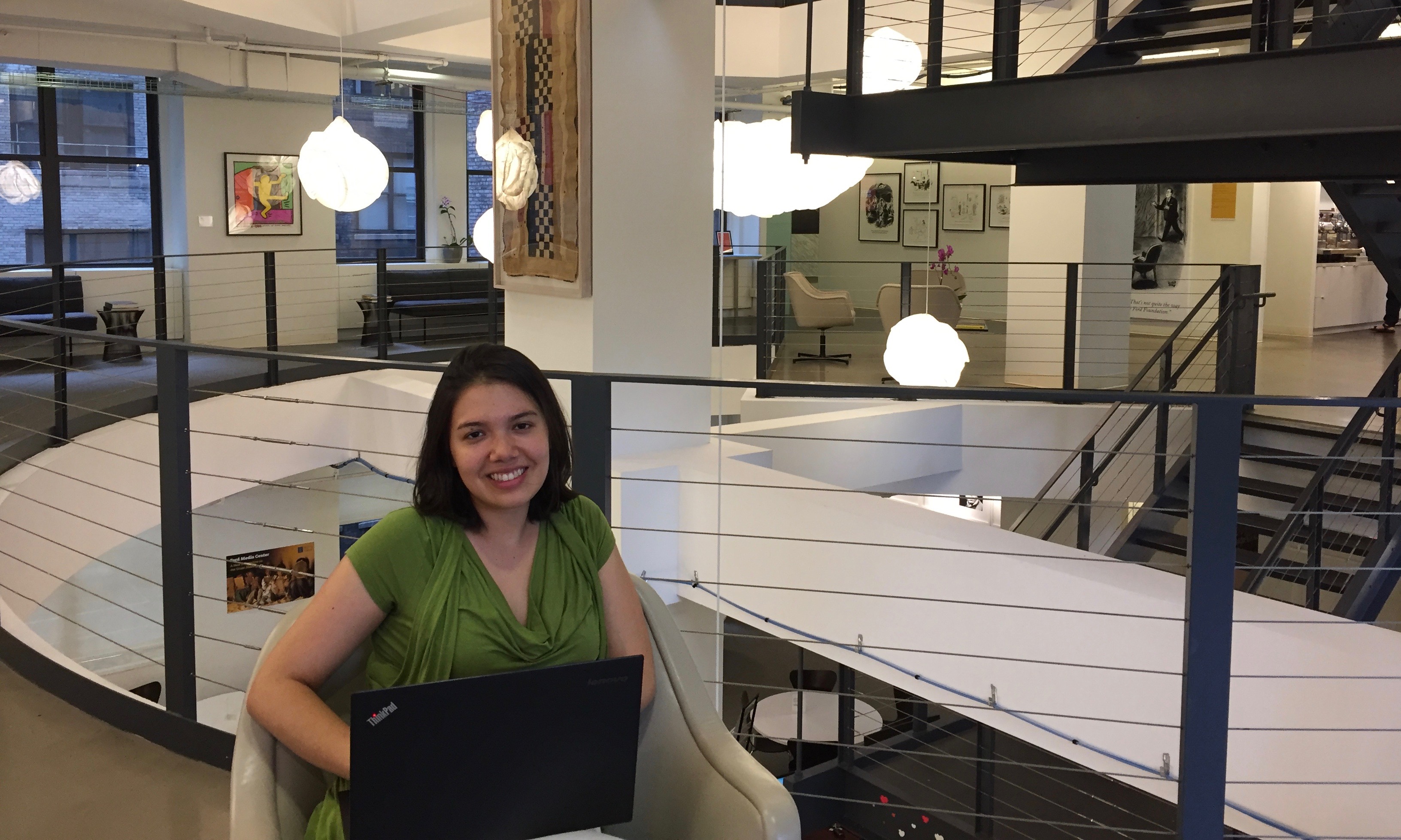
Funding for social change
By Priscilla Acuna, ’17 (Human Biology)
As someone uncomfortable at the idea of vast sums of wealth, philanthropy is perhaps a strange place to land for my first job after graduation. I spent my teenage years in Jakarta—a hot, dense, tropical city where gleaming skyscrapers coexist with bustling urban shantytowns (for lack of a better word). I understood from an early age that extreme wealth exists in a world where many don’t have enough money to eat, work, and live in dignity. Yet now, six years after my departure from Indonesia, I find myself completing a year-long, postgraduate fellowship in philanthropy— a field that some might describe as the practice of allocating wealth to social causes.
My introduction to philanthropy came during my junior year in the form of POLISCI 236: Theories of Civil Society, Philanthropy, and the Nonprofit Sector. Upon hearing the course’s final project—a small-team grantmaking process to allocate $25,000 to a Bay Area nonprofit—I felt a reflexive aversion to participate. Ultimately, I completed the course in its entirety and learned something from the chance to confront my discomfort.
Newly conversant in the language of philanthropy, after graduation I pursued the Tom Ford Fellowship in Philanthropy, made possible by Susan Ford Dorsey’s Sand Hill Foundation. I was fortunate to be placed with Laine Romero-Alston, program officer in the Future of Work team at the Ford Foundation in New York City. I began this experience motivated by a simple desire to understand the funding side of social change work and left with a deepened understanding of the role of philanthropy in society.
Working at the Ford Foundation can be exhilarating, sitting at a hub for some of the most groundbreaking, inspiring social movement work unfolding nationally and globally. It has been an absolute privilege to be here. Through mentors I admire and respect, I learned that resourcing is part of the ecosystem of social change work. At its best, philanthropy enables the world’s most important work to unfold seamlessly and abundantly; at their best, funders are responsive and humble stewards of resources.
I was introduced to the notion of grantcraft, the idea that giving away money can be done with intentional analysis of the conditions within a field. The program officer, a professional who manages a grant portfolio, best functions as a node within a network: a holder of relationships, an expert convener and connector informed on the latest developments in their field, a humble and helpful thought partner. A program officer can have tremendous influence; at the scale of $100,000 grants, program officers help shape a field. Before my fellowship, I didn’t know that this kind of work existed; now I would like to work as a program officer at some point in my career.
At our end-of-year presentation, I was asked by my professor from that junior-year course whether I am still as skeptical as when I started. I responded that my fellowship allowed me to enter philanthropy as an outsider with a curious mind, and I have come to understand more fully the complexities of philanthropy. For instance, while the program officers I know personally are admirable stewards of resources, at the structural level foundations exist because our economic system rewards a concentrated few with staggering levels of wealth that they are empowered to redistribute at their behest. It also baffles me that foundation endowments are required to disburse only five percent of their resources annually and are in many cases sustained by investments that counter the very goals of a foundation’s grantmaking.
Perhaps this seems overly critical, but I learned from student activists at Stanford that critique is a show of love, a demonstration of how seriously you value an actor and see its potential to effect positive change. Philanthropy has enormous potential to do good, and I am grateful for having been given the opportunity to spend my first year after Stanford as an earnest student of the field.
After completing the Tom Ford Fellowship in Philanthropy, a Cardinal Careers fellowship, at the Ford Foundation in 2017–18, Priscila went on as a program manager at Working Partnerships USA, a Silicon Valley-based economic justice organization.
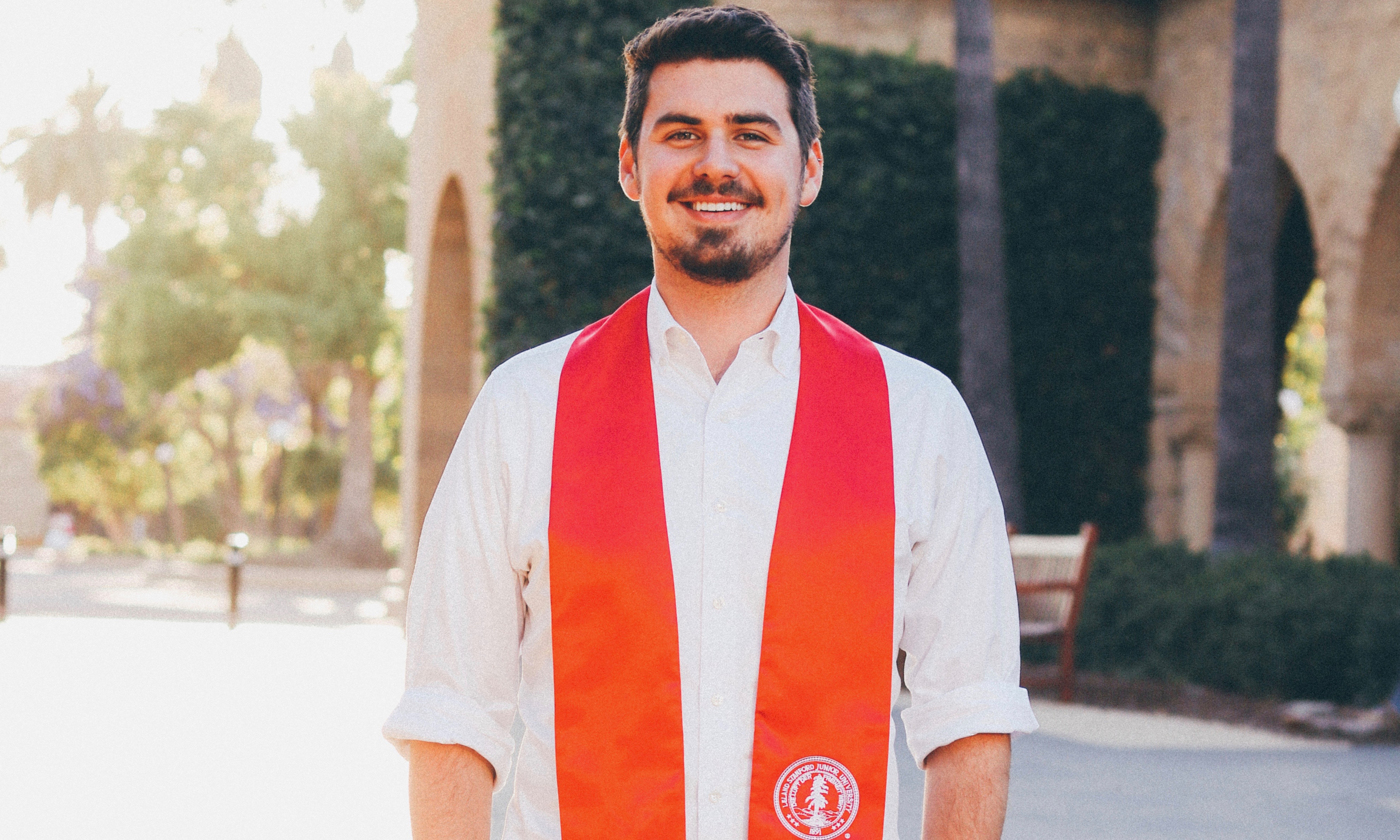
Advocating for patients and policy change
By Brian Kaplun, ’18 (Human Biology), MS ’18 (Management Science & Engineering)
I’ve wanted to be a doctor ever since I was a kid, but it was an experience as a research assistant at Children’s Hospital Los Angeles right before coming to Stanford that showed me there is more to healthcare than a doctor’s visit. There, I met a small boy who had gone blind due to his family’s lack of consistent access to healthcare—an entirely preventable loss. Based on this experience, and the many lessons on injustice and inequity to come, my coursework, advocacy, and service over the last four years have all been part of a deeply held commitment to addressing healthcare disparities.
I started volunteering at the student-run Arbor Free Clinic my first quarter at Stanford as a Bridge to Care counselor. It was my job to find patients what the clinic couldn’t provide—from health insurance and a regular doctor to temporary housing, legal assistance, and job training. I learned how a difficult diagnosis or untreated illness could impact every aspect of one’s life, and about the potentially harmful interplay between health and sociopolitical factors—including from far too many undocumented families scared to seek healthcare out of fear of being separated and torn apart.
This was—and still is—the hardest job I’ve ever had, but it was the first time I felt like I had the knowledge base to help others. However, even after three years on the team, the sheer complexity and gaps in the healthcare system and the broader safety net meant that often our patients couldn’t get the help they needed.
I worked my way up to become clinic manager, overseeing more than 100 undergraduate and medical student volunteers. As the primary liaison to other Bay Area community health centers and agencies, I worked to strengthen collaborations to provide patient resources, including up-to-date information on topics such as immigration assistance, domestic violence resources, and pro-bono surgery options. Most importantly, in my successes and failures as a volunteer and manager, I learned that as an outsider to the communities we served, I needed to recognize my privileges and biases; the most important thing I could do was know when to listen, and to stay humble and empathetic.
As a gay man, I have struggled with less-than-inclusive care, and LGBTQ+ advocacy has been an important part of my passion for healthcare equity.
At Arbor Free Clinic, I co-led the Queer Health Initiative, a multi-year project to systematically improve services and care for LGBTQ+ people. I also served with the Human Rights Campaign on the Healthcare Equality Index, a tool focusing on inclusive hospital policies, and at Pangaea Global AIDS as a Huffington Pride Cardinal Quarter Fellow, studying the HIV policy landscape for gay men and trans women in Zimbabwe.
While one-on-one patient interactions reaffirmed my goal to be a physician, through Stanford courses on racial and ethnic health disparities, the American healthcare system, and policy analysis, I learned about the broader policy and social landscape that leaves so many patients behind. Last summer, as a Sand Hill Foundation Cardinal Quarter Fellow at Kaiser Family Foundation, I applied this learning to writing policy analysis and issue briefs about changes to the Affordable Care Act and the state of the HIV epidemic for gay and bisexual men.
In the coming year, as a 2018 John Gardner Public Service Fellow, I will staff the Democratic health policy team for the Health, Education, Labor, and Pensions Committee in the U.S. Senate, with Deputy Health Policy Director Andi Fristedt as my mentor. This committee is the battleground for many of the fights over Affordable Care Act repeal, healthcare costs, and reproductive justice, and where legislation to curb the opioid epidemic is taking shape, and I’m excited to dive into these important efforts. Following the fellowship, I will pursue a medical degree at the Icahn School of Medicine at Mount Sinai in New York City.
At Stanford it was service that affirmed, over and over, the issues I cared about and the ways I needed to be involved. Through my Cardinal Commitment, I learned how to channel my frustration with inequity into a constructive desire to do more. As I look toward life after Stanford, I hope to continue working in both the clinical and systemic aspects of health—as a doctor healing individual patients, and as a policymaker and advocate working on the broader factors that affect their wellbeing.
Brian Kaplun was one of more than 300 students who declared a Cardinal Commitment in 2017–18.
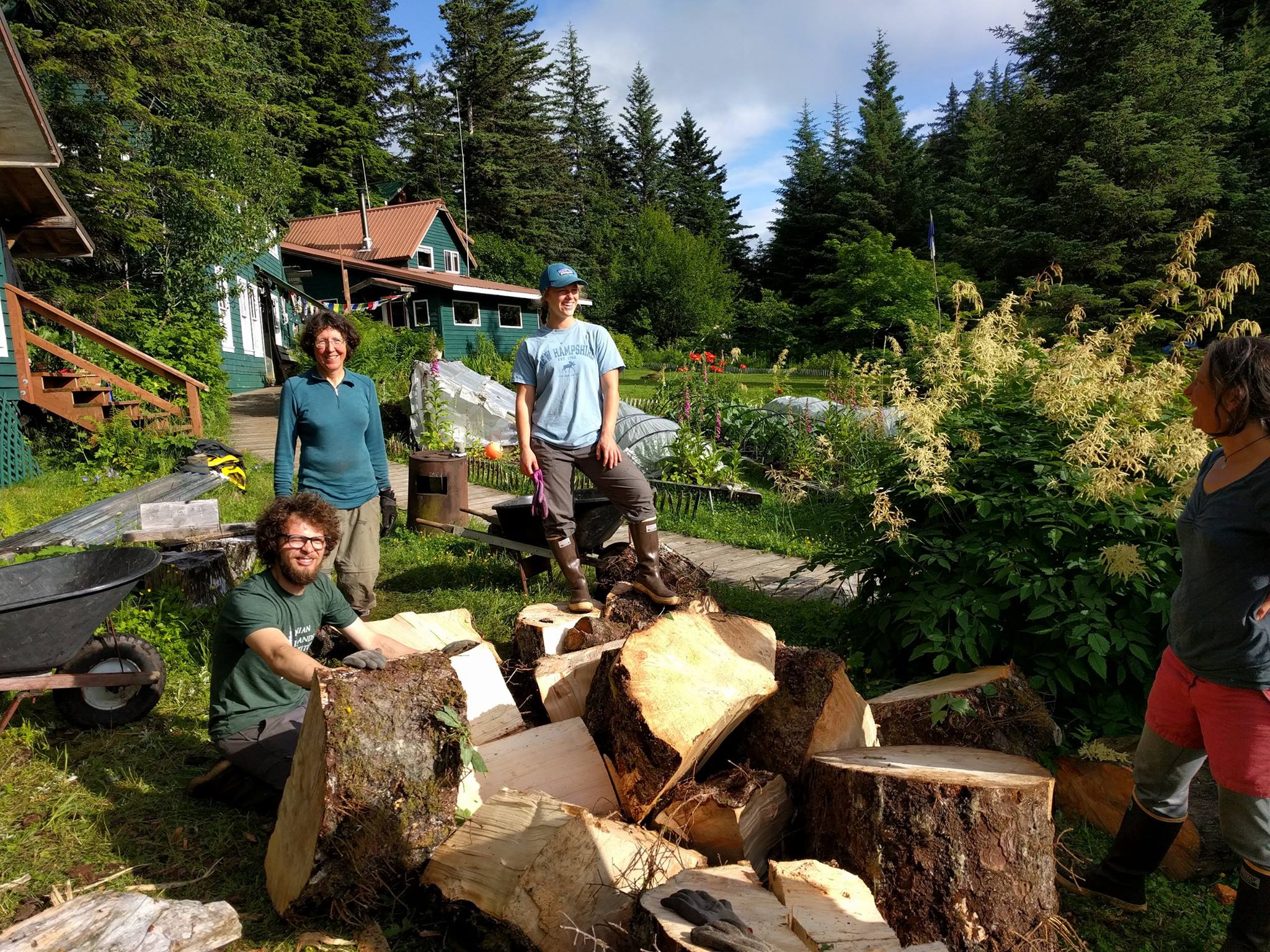
Notes from Magic Beach: small-town sustainability in southeast Alaska
By Madelyn Boslough, ’18 (Electrical Engineering)
Sea lions sang me to sleep in the dusky pink afterglow of a midnight sunset in southeast Alaska. Their bellows, echoing across the strait to my tent on Magic Beach, were surprisingly soothing, harmonizing with the gentle crash of tiny waves on gravel and kelp. The beach was aptly named. Each morning, I woke under a low ceiling of fog, obscuring the peaks of the Inian Islands and giving the whole place a mystical air.
Though I was born and raised in Alaska’s Wrangell St. Elias National Park, I had never spent time in the Southeast region of the state until I was awarded a Cardinal Quarter through the Alexander Tung Memorial Fellowship to serve with the Inian Islands Institute.
I was captivated by the beauty of the Institute’s location on a remote rainforest island off the coast of Gustavus, Alaska, and intrigued by its mission of inspiring youth to care about the environment by using experiential education. The Institute was founded by four Stanford PhD students, including the director, Zachary Brown, a recent PhD graduate in environmental science and fellow Alaskan.
The school intends to model sustainable living, and Zach offered me a position updating the Institute’s micro-hydroelectric system, which provided electricity to off-grid property. I was thrilled to take the lead on a project in small-scale renewable energy. I love Alaska with all my heart and have always intended to use my education to serve the environment and communities that shaped and supported me. I majored in electrical engineering to work in renewable energy and influence my state to rely less on oil and use more environmentally friendly technologies.
Over the course of the summer, I researched existing micro-hydroelectric systems in rural Alaska and began to plan a retrofit of the system on the island. I assessed the school’s present and future electricity demands, and the potential for incorporating other renewable energy sources like wind and tidal.
I was grateful for training in Stanford’s Principles of Ethical and Effective Service, especially preparation and humility. Preparation guided me through the tasks and challenges I expected; humility allowed me to navigate the inevitable unexpected tasks and challenges for which I had not prepared.
For example, on my first trip to the island where the Institute is based, I discovered that I would be closely working with a seasoned fisherman named Greg. Greg was a brilliant engineer without a college degree, who imagined, designed, and installed the micro-hydroelectric system on the island in the 1980s, long before terms like “renewables” and “microgrids” were heard in Alaska. He had done all this by corresponding with a Canadian hydroelectric manufacturer via handwritten letter, and with the help of a few good friends for the system’s actual construction.
Then, nearly 40 years of dependable renewable electricity later, I showed up to “fix” his ingenious but aging design. It took weeks for Greg to stop responding to my questions with a terse, “You’re the electrical engineer; you tell me.” Only by persistent, respectful questioning and listening was I able to earn his grudging willingness to help me.
Living in Gustavus was a profound civic awakening. An isolated town of only 400 people, Gustavus is an intimate place where everyone knows everyone, and every person plays a visible role in the social fabric. Just by arriving, I took on a role as well. My actions could affect everyone in town, and realizing this, everything I did took on a greater importance. I had a responsibility to the community of Gustavus, and by the end of the summer, I had made an impact. I left knowing that my actions make a difference and that I can be of real service to the Alaskan communities I love.
Working on small-scale renewable energy was a microcosm for the greater issues of climate change and planetary sustainability—a window into a wicked problem. Working with Zach, Greg, various handymen and community volunteers, and the Institute’s board of directors pushed me to understand how to work with a team with diverse expertise to tackle difficult problems. Through my fellowship I focused on the questions of what I want to do with my life and what kind of impact I hope to have on this world. I learned from Zach that a bias toward action is key—in the face of a terrifying, massive problem like climate change, the only thing to do is to choose somewhere to start, and do something.
Madelyn was one of 486 students who completed a Cardinal Quarter in 2017.
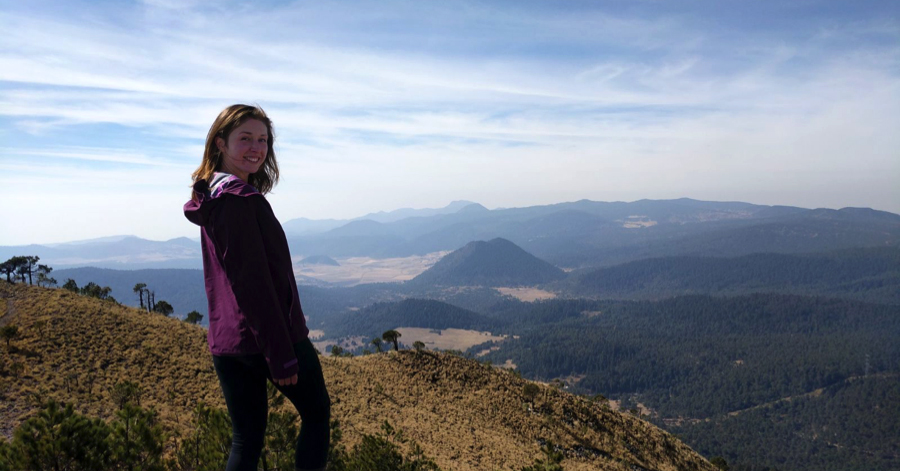
Building cultural sensitivity in conservation

Maria Doerr, ’17 (Environmental Systems Engineering)
When the rain starts, we’re not ready. Ten of us stand in the truck bed, grasping the railing as the vehicle lurches down the muddy trail. “¡Aquí!” our community partner Sapo (“toad” in English) yells, grinning while he pulls up a dusty plastic tarp from below our feet. We stretch it over our already-soaked heads as the truck continues weaving through the forest.
Since September, I’ve been working as the Water & Cities Fellow with Conservation International Mexico, supporting an initiative to protect the watersheds of Mexico City.
Mexico City’s water issues are complex. When it rains, parts of the city flood. Every day, approximately 1,000 people settle in the city, creating an ever-growing thirst to quench with an ever-dwindling water supply. The aquifers that provide 70% of the water to 23 million people in the megalopolis are greatly over-exploited. Uncontrolled urban expansion, poor land management, and pesticide-use in the watersheds that recharge these aquifers complicate the situation all the more.
Conservation International works to curb these impacts in part by creating a common dialogue among players in city, rural, and natural landscapes. For me, this has meant sometimes pulling on my boots and heading to the mountains at 5:00 am. Other times it’s meant drinking coffee with corporate sponsors in business casual.

The challenges of uncontrolled urban growth, poor land management, and pesticide-ridden farming are complicated. Development isn’t just bad; planting trees isn’t just good. When working in rural zones the goal is not to tell indigenous community members how they should envision their towns, but rather provide them with the resources and technical experience to do so as thoughtfully as possible and with natural systems in mind. Similarly, when talking with urban residents and sponsors who think that the hills should be covered with trees, we explain that the ecosystems of the watersheds are more complex than this and include native grasslands that also need to be protected, sans trees. Learning to synthesize these intricacies in our communications with colleagues and partners and in the implementation of our regional programs has been one focal point of my work this year.
Since graduating, I’ve been challenged to put my principles into practice and test out frames for ethical and effective service. Questions I posed in class, I now ask on a day-to-day basis: How can I best support community-driven environmental work in Mexico as an American? What ways can I build cultural sensitivity in how I approach conservation? Where does my voice belong and how can I uplift the voices of others?
Work trips like the one with Sapo remind me that while the mountains are indeed key to water security in the region, they are also a physical embodiment of Mexican cultural heritage. They are bigger than the articles I write, the excel sheets I analyze, or the meetings I attend. This land is home to nearly 100 indigenous communities, whose members include those with me in the truck bed. Through their experiences, I am all the more certain that the region’s future does not exist without the deep integration of traditional knowledge.
Living history fills the watershed, and at each turn, continues to teach me.
Maria is the 2017 Halper International Public Service Fellow with Conservation International. Learn more by reading her personal blog and listening to “Protecting People and Water in Mexico City,” a Making Contact radio piece she created in May, 2018.
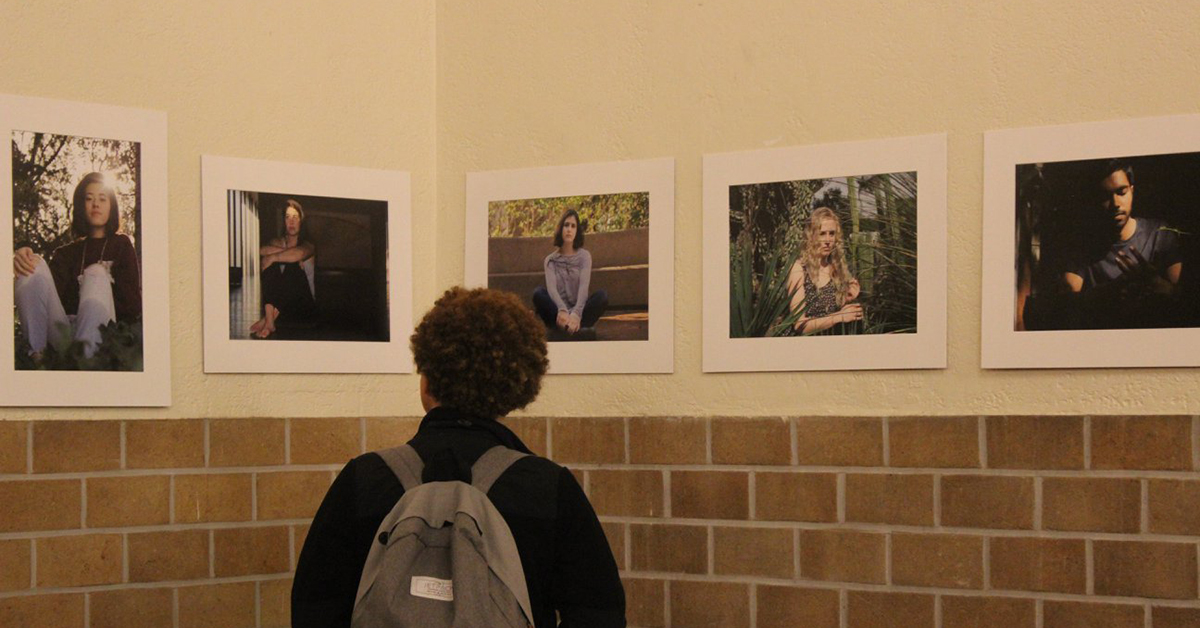
Seeing the invisible
By Jenn Ampey, ’19 (International Relations)
The last strand of decorative lights fell into place as the clock struck 7:00 pm. After more than nine months of hard work, it was time to open the doors to “Kaleidoscope: Mental Health Coming into Focus.”
As students filed in, I couldn’t help but stare in awe at the number of students that had come to immerse themselves in the mental health experiences of their peers through art. Many visiting students stayed for upwards of an hour. As co-president of Stanford Mental Health Outreach, I have long had the privilege of engaging with students and faculty across campus on mental health issues. However, the art showcase was a new venture. It involved more than 60 non-members, including student artists and the students photographed. Without them, SMHO would not have been able to host such a moving gallery.

We need to continue to have provocative interactions around mental health issues. Doing so with different media is one more way to reach out to our peers and offer our experiences in an effort to destigmatize conversations that could make an enduring difference in someone’s life.
As the event drew to a close, surrounded by artistic expressions of sometimes indescribable human experiences, my co-president and I found comfort in the realization that we helped build bridges—bridges that we hope will be crossed again and again at Stanford going forward.
Jenn was a Peer Advisor at the Haas Center in 2017-18, in addition to her work with SMHO.
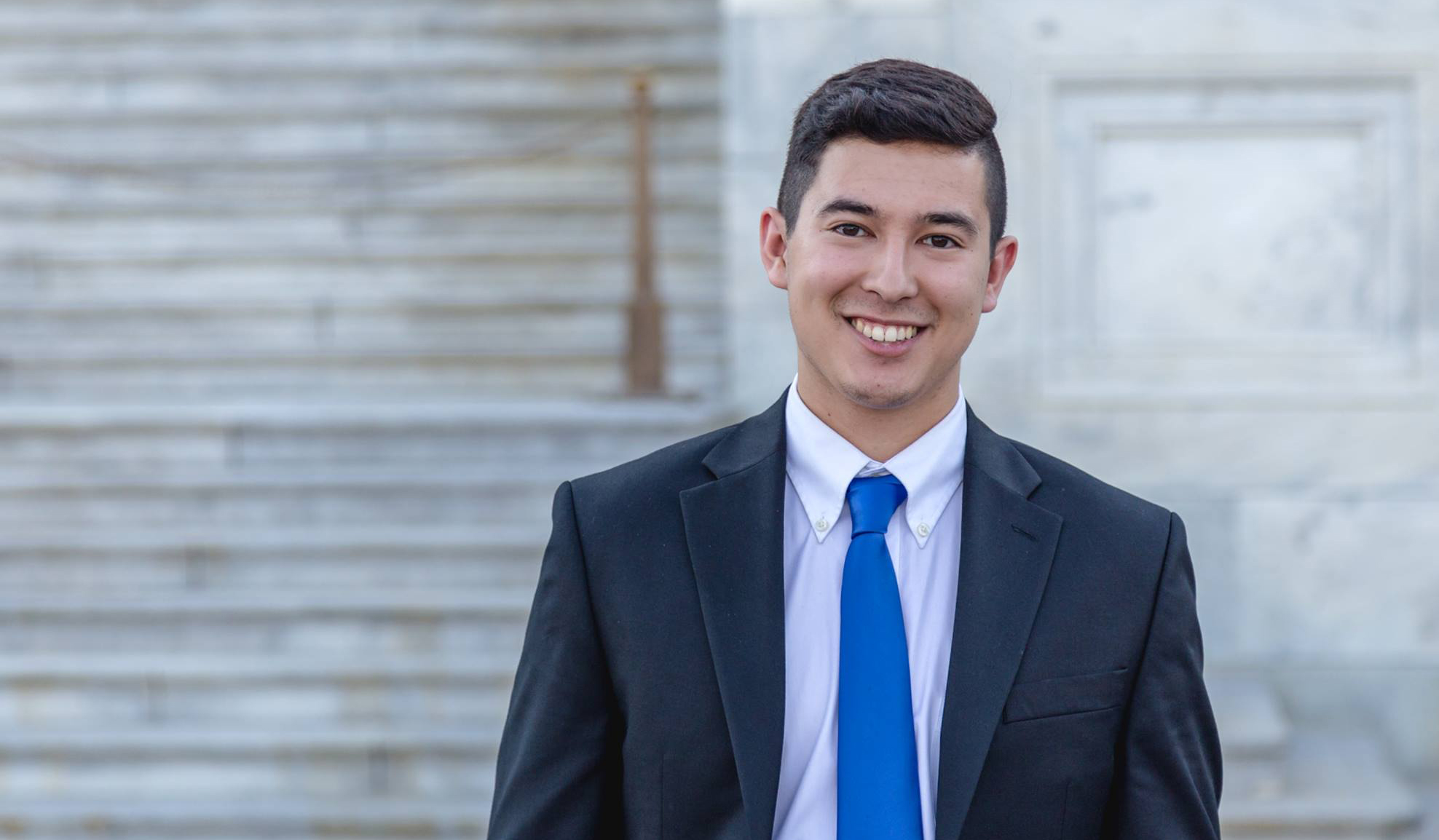
Know history, know self, know mental health
By Joriene Mercado, ’18 (Human Biology, Education)
I was back in a high school classroom in my hometown of Daly City, California, to facilitate a workshop for nine students about Filipino history, mental health, and ethnic identity. As I was leaving, one of the students said that during this workshop they learned about history in a way that they hadn’t in an entire semester of their history class.
Throughout high school, I never had the opportunity to learn about or discuss Filipino history; I first learned about it through a student-initiated course at Stanford. And it wasn’t until college, once I began to struggle with my mental health, that I took the time to even consider mental health. When I saw how the two intersected and influenced my ethnic identity development, I felt I would’ve been much better off if I had learned about mental health and my Filipino history in high school. However, I’ve been privileged to attend Stanford, and I hope to help high school students in my community by sharing what I’ve been fortunate to learn about.
In the future, I want to continue teaching our youth and ensuring that they can see themselves in what they’re learning. Knowing one’s ethnic history is critical for positive and complete identity development, especially during high school.
“Know history, know self. No history, no self.”
Joriene is a member of the 2017-18 cohort of the Public Service Honor Society.
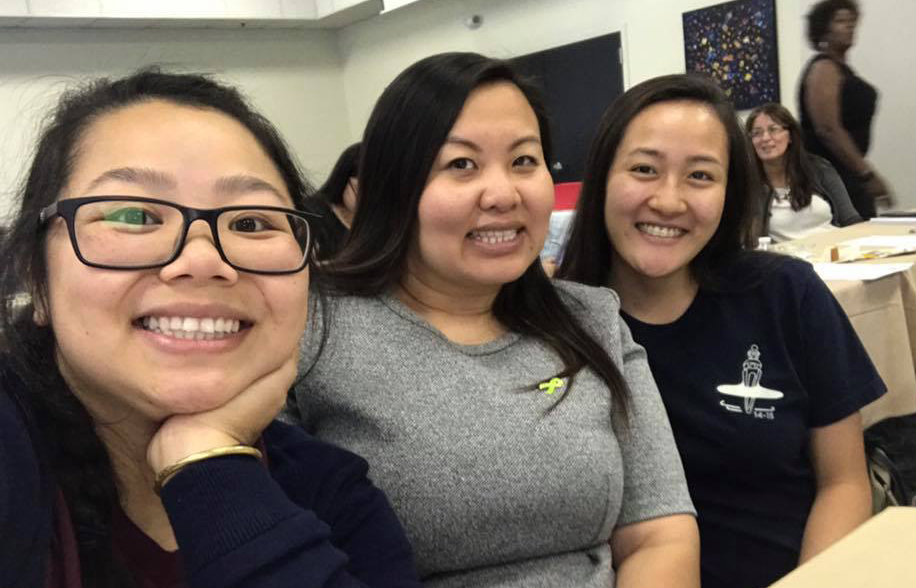
Learning about my communities
By Vanuyen Pham, ’18 (History)
“Why is sexual and reproductive health important to you?” I asked a student.
I’m back in high school for the day. As part of my summer internship with Southeast Asia Resource Action Center (SEARAC), I drove down from our offices in Sacramento to interview Southeast Asian American youth in Oakland about their access to sexual and reproductive health services.
The students described the difficulty they face around accessing services and products because of cost, on top of the cultural stereotyping that happens in neighborhoods where some of them live. The students were far more knowledgeable about the complexity of sexual and gender identity than I was when I was their age, and understood how fortunate they were that they went to a school with a clinic that provided what they needed.
This was just part of my summer at SEARAC, where I had an amazing and fulfilling experience through the Empowering Asian/Asian American Communities Fellowship. I outreached to congressional offices, followed the latest updates on the federal efforts to repeal the Affordable Care Act, contributed to reports on the impact of the ACA and inter-generational trauma on Southeast Asian American communities, and participated in legislative visits to the State Capitol. Through my experiences, I gained a better understanding of the power of community organizing and policy change and am passionate about pursuing postgrad opportunities in public health and public policy to advocate for my communities.
Vanuyen is a member of the 2017-18 cohort of the Public Service Honor Society.

Chemistry with Kusuma
By Elizabeth Wallace, ’18 (English, French Literature)
The last place I expected to use my evolving knowledge of organic chemistry was at an orphanage in rural India. Yet there I was, cross-legged on the floor of the Aarti Home dining hall trying to recall the difference between an alkene and an alkyne with a young woman named Kusuma.
“Akka, sister, it goes like this,” she tells me, bending over to draw the reaction arrows on my paper.
Kusuma was in her first organic chemistry class, but her dream is to go on to get her PhD. Her spunk and spirit inspire me. She is witty, sharp, and not afraid to speak her mind.
Every girl I met at the Aarti Home in Kadapa, India, was as dedicated and determined as Kusuma. Aarti Home was set up in 1992 by the incredible vision of Sandhya Puchalapalli, who determined that girls in her community should have a safe place to live and be educated, even if their families could not afford to provide it.
I came to Aarti in the summer of 2017, a Stanford intern eager to learn more about the organization and help in anyway I could. What I found was a center of female empowerment, a cradle of love and support where brilliant and strong women are molded. Aarti gave me hope that the future is undoubtedly female and because of that, indisputably bright.
Elizabeth is part of the 2017-18 cohort of the Public Service Honor Society, a leadership program for seniors run by the Haas Center.
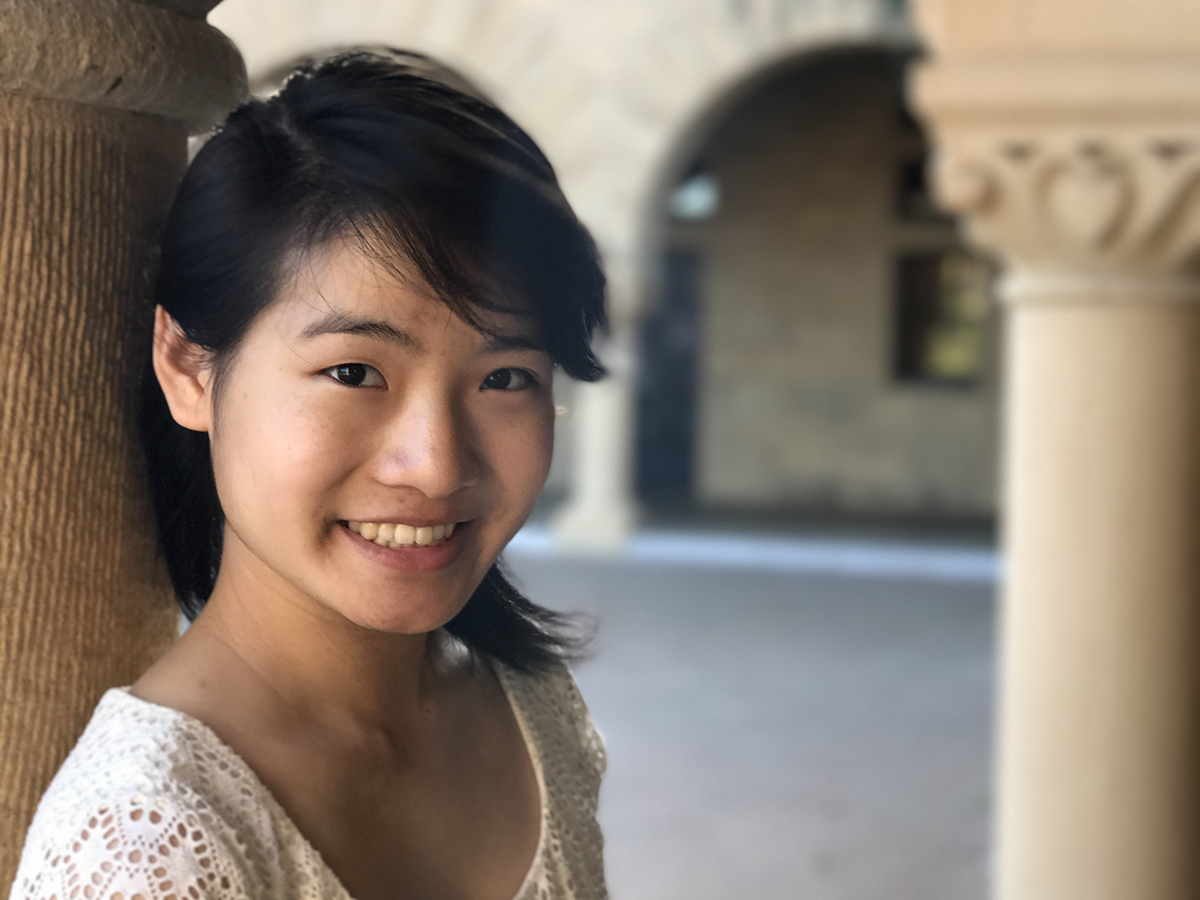
Heart in service
By Melodyanne Cheng, ’18 (Comparative Studies in Race and Ethnicity and Biology), MA ’19 (Comparative Medicine)
“I carry my community on my back,” said the man who stood tall at the front of the East Palo Alto City Council meeting room. He was dressed in vivid ink tattoos and wringing a beanie between his hands. He proclaimed himself an elementary school graduate, and the observing crowd fell palpably silent. When the city council questioned his qualifications, revealing his lack of skill and experience for the position in comparison with the real estate lawyer candidate and the previous board member running for re-election, the man proudly defended his right for candidacy on the Rent Stabilization Board as a proud product of East Palo Alto. “I may not have training,” he boomed, “but I have heart.”
As a Community Health Advocacy Fellow, I was an outsider observing the rent control committee elections, hoping to understand some of the political events that have great impact upon the overall health of the community I served. Unlivable conditions, lack of accessible housing, rocketing rent prices, and gentrification are negatively affecting the East Palo Alto community and the health of the patients I serve.
The man’s words echo in my mind as I volunteer at Ravenswood Family Health Clinic, which serves a patient community that is majority low-income. It’s been my absolute joy to get to know patients as they share precious pieces of their life stories with me. As I interact with patients as a women’s health navigator, I see patient wellness impacted by so many different upstream social determinants of health, such as zoning policies, housing affordability, and housing conditions. I’m honored to serve these amazing people in whatever capacity I can, now as a patient advocate and in the future as a community health-focused physician.
Melodyanne is a member of the 2017-18 cohort of the Public Service Honor Society.
